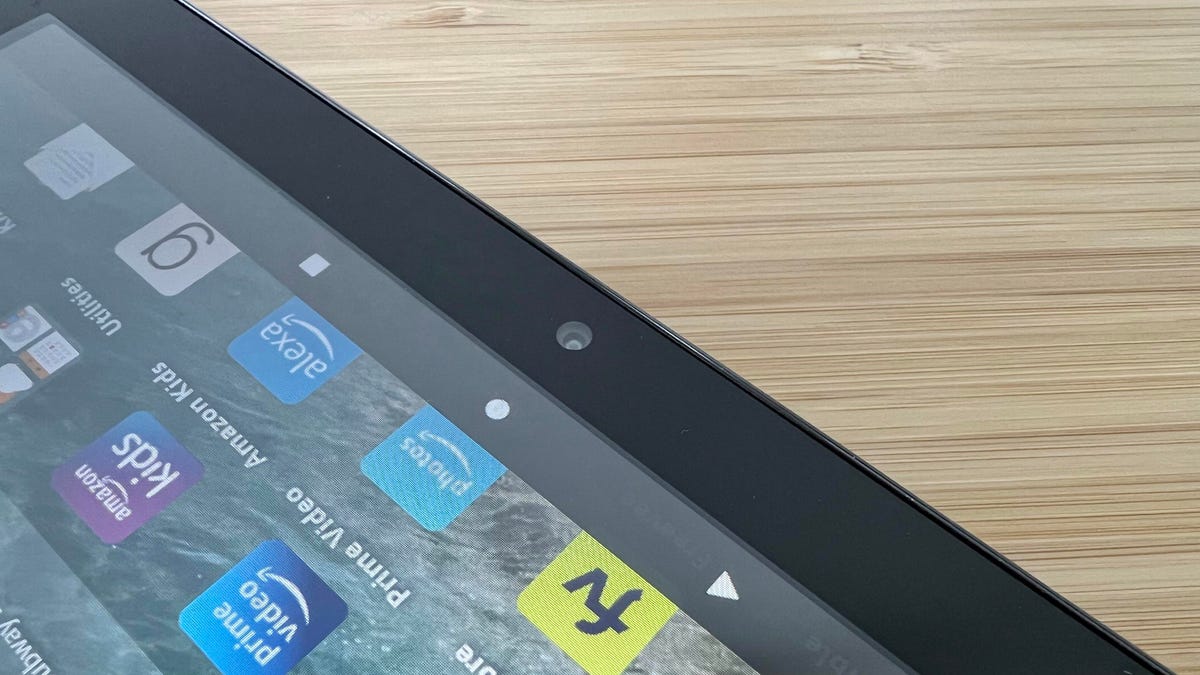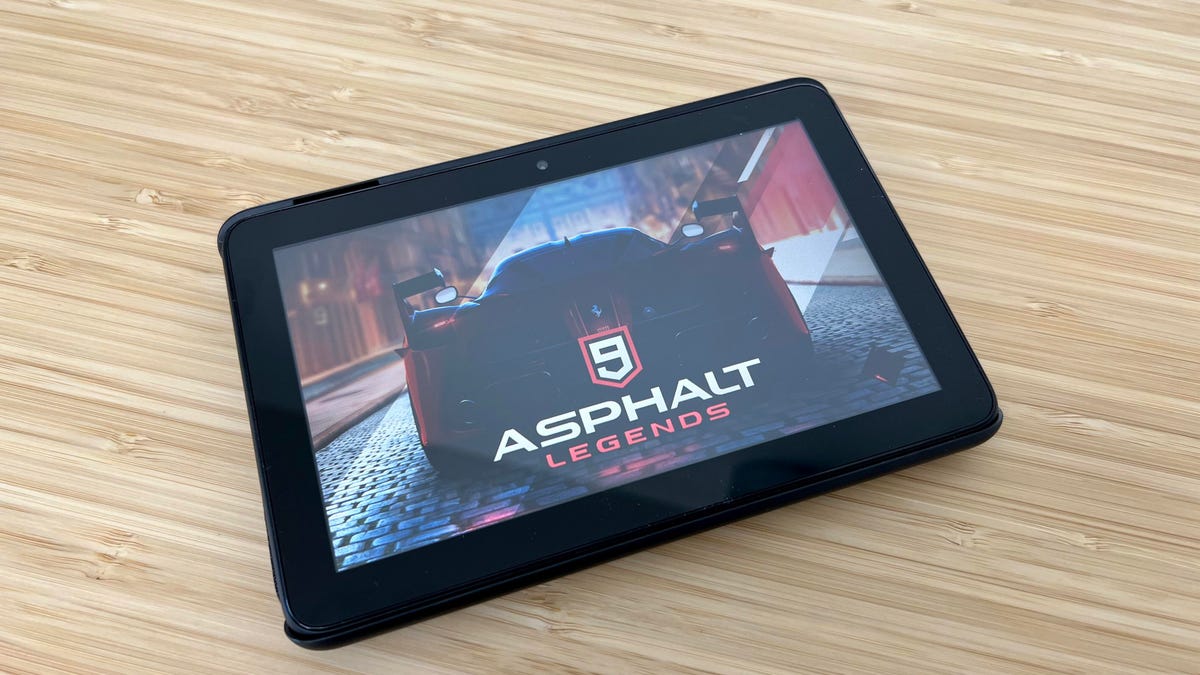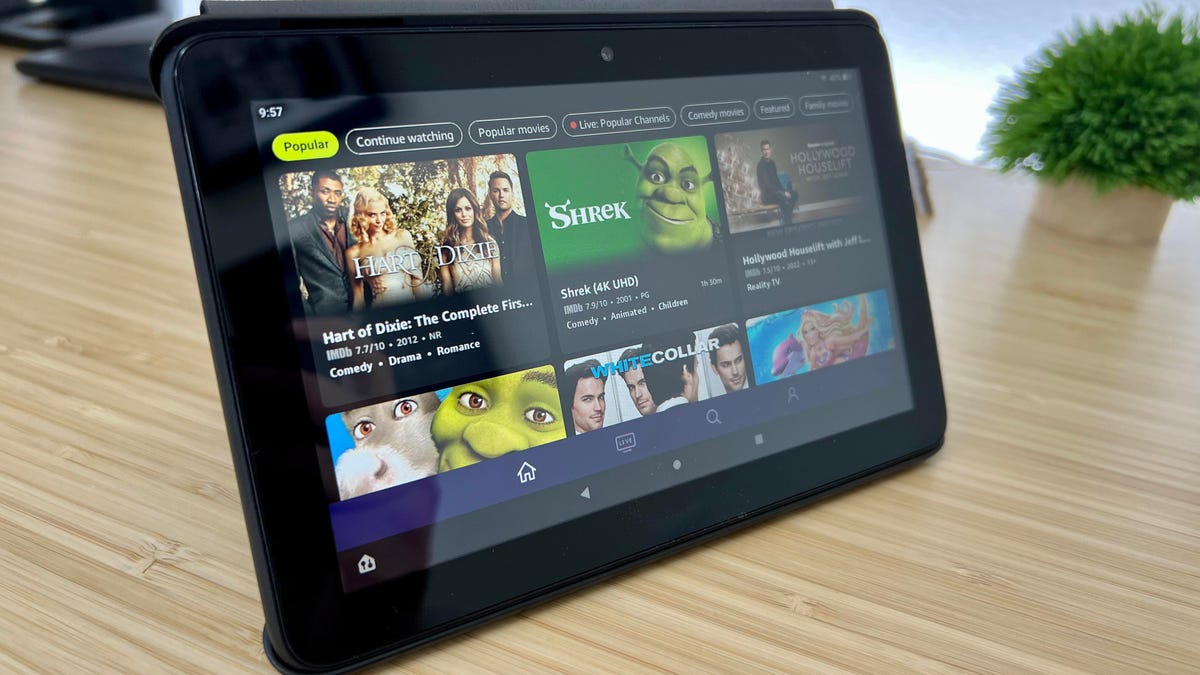The last time a new Fire 7 was presented by Amazon was in 2019, which is an eternity when it comes to technological gadgets. But, in May 2022, Amazon announced a new Fire 7 with a USB-C port, better battery life and better performance. These changes have been accompanied by a price increase, the base model of the Fire 7 going to 79.99 euros.
Amazon began shipping its Fire 7 at the end of June. We used it for occasional reading, playing a video game or two, and watching videos. And, in that regard, this tablet does a good job.
Technical characteristics
- Processor : MediaTek MT8168V/B
- Screen : 7 inch, 1024 x 600 IPS
- Memory : 2vGB RAM – 8/16GB storage – microSD support up to 1TB
- Cameras: 2 MP rear, 2 MP front
- Battery : up to 10 hours of battery life
- Connectivity: 802.11ac
- Bluetooth: 5.0
- Operating system : Fire OS
- Color : Black
- Price : from 79.99 euro
A modern, but basic tablet
The design of the Fire 7 is unlikely to attract attention when you use it in public. It’s a basic plastic rectangle topped with a glass plate and designed to do the bare minimum. The front camera has been moved to the middle of the screen when the Fire 7 is in landscape orientation, unlike the previous model where it was on the top edge. This facilitates video calls from the tablet. The front and rear modules are both 2-megapixel sensors. Photos and videos are decent, but far from superb.
Almost all of the ports and buttons are on the top edge (in portrait mode). There’s a power button, volume buttons, a 3.5mm headphone jack, and a USB-C port for charging the tablet. The abandonment of micro USB on Amazon’s devices, especially on a $70 product, is to be applauded.
On the bottom edge of the Fire 7 is a microSD card slot that lets you expand storage up to 1TB.
The screen measures 7 inches and benefits from a definition of 1024 x 600 pixels. It’s not the sharpest screen on the market, but at this price that’s normal.
The most striking aspect about the design of the Fire 7 is actually its small size. It is a device that can easily be carried in a purse or backpack without weighing too much. In terms of size, the Fire 7 measures 180.68 x 117.59 x 9.67 mm and weighs 280 grams.

Image: Jason Cipriani/ZDNet.
Just good enough performance
Amazon’s Fire 7 has always had barely adequate performance. In 2022, this philosophy remains the same. Amazon uses a quad-core processor with 2GB of memory, which the company claims provides a 30% jump in performance over the previous model.
With its 2 GB of RAM, the Fire 7 doubles the amount of RAM compared to the 2019 model, and it’s a notable addition, especially for games. Despite this, the general performance of the Fire 7 will teach you to be patient.
When switching between parts of the interface, such as opening the Kindle Store, Amazon Appstore, and the Library tab, the tablet is often quick and responsive. But once you type on a search field, it can take a long time for the keyboard to appear.
The Fire 7 OS includes a dedicated “game” mode, which is automatically activated when you launch a game (any game installed from the Appstore triggers this mode). This mode optimizes device performance, hides notifications and disables the Alexa function. But even with this feature, it can take a minute or two before a game becomes truly playable.
From what we could see, as long as an app stays in the foreground, the performance boost is noticeable. But if, say, you quit the browser after surfing the web for a few minutes, then come back to it an hour or two later — after using the Fire 7 for another task — it will take a few extra seconds to launch.
To put it another way, the performance of the Fire 7 is decent as long as you only use one app at a time and don’t expect to wield a racing beast.
Amazon promises 10 hours of battery life for its tablet, another improvement over the 2019 model. In our tests, we had no complaints about the tablet’s endurance. After watching live TV for a few hours, then browsing the web and attempting to play Robloxthere was a good percentage of battery left on the tablet.

Image: Jason Cipriani/ZDNet.
A word about the software… and Alexa!
One of the most pervasive issues on all Amazon devices is the lack of apps and the absence of Google services. The Fire 7 uses Fire OS, an operating system from Amazon. The latter is based on Android, but the company has deeply modified and personalized its operation. Because of that, it’s not eligible for Google’s certification process, so you won’t find apps like Google Maps, Gmail or YouTube pre-installed – or even available – in the Amazon Appstore.
Despite the absence of Google services, you will be able to find most basic apps in the Amazon Appstore. Spotify, Disney+, Facebook and Zoom are notably in the game. This separation of ecosystems isn’t ideal for anyone who has invested heavily in Google’s Play Store, or someone like me who depends on a password manager whose app isn’t available in the app store.
One of the advantages of Fire OS is that Amazon is able to integrate Alexa directly into the device. This means you can use the tablet as a makeshift Echo Show device. There’s a toggle to turn Alexa on or off in the settings. When the feature is enabled, you can say “Alexa”, followed by a command or a question. Just like you would if you had a dedicated smart display or speaker.
Along with the ability to ask questions, you can also view and manage your home automation devices connected to Alexa. So you can control your cameras, lights or outlets, using either your voice or the dedicated device button in the bottom navigation bar.
Conclusion

Image: Jason Cipriani/ZDNet.
The Fire 7 once again offers a balanced experience, if you don’t have excessive expectations of the device. It’s not the fastest tablet you’ll ever use, and lag can be frustrating at times. But if you are a little patient, it can turn into a Kindle reader, a smart screen or a connected speaker. Besides being a drinkable tablet.
Source: ZDNet.com
